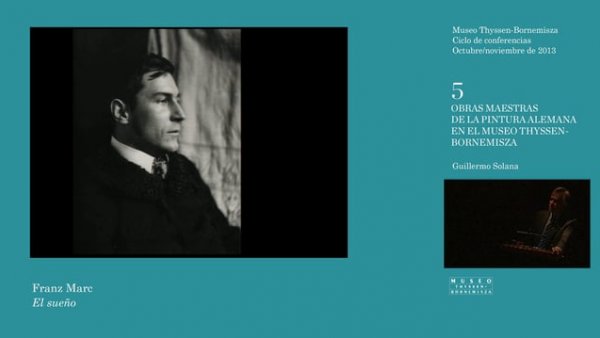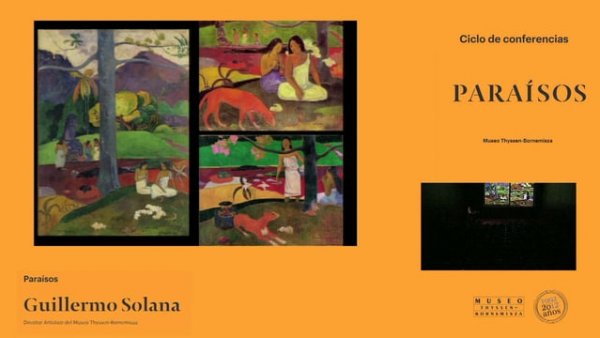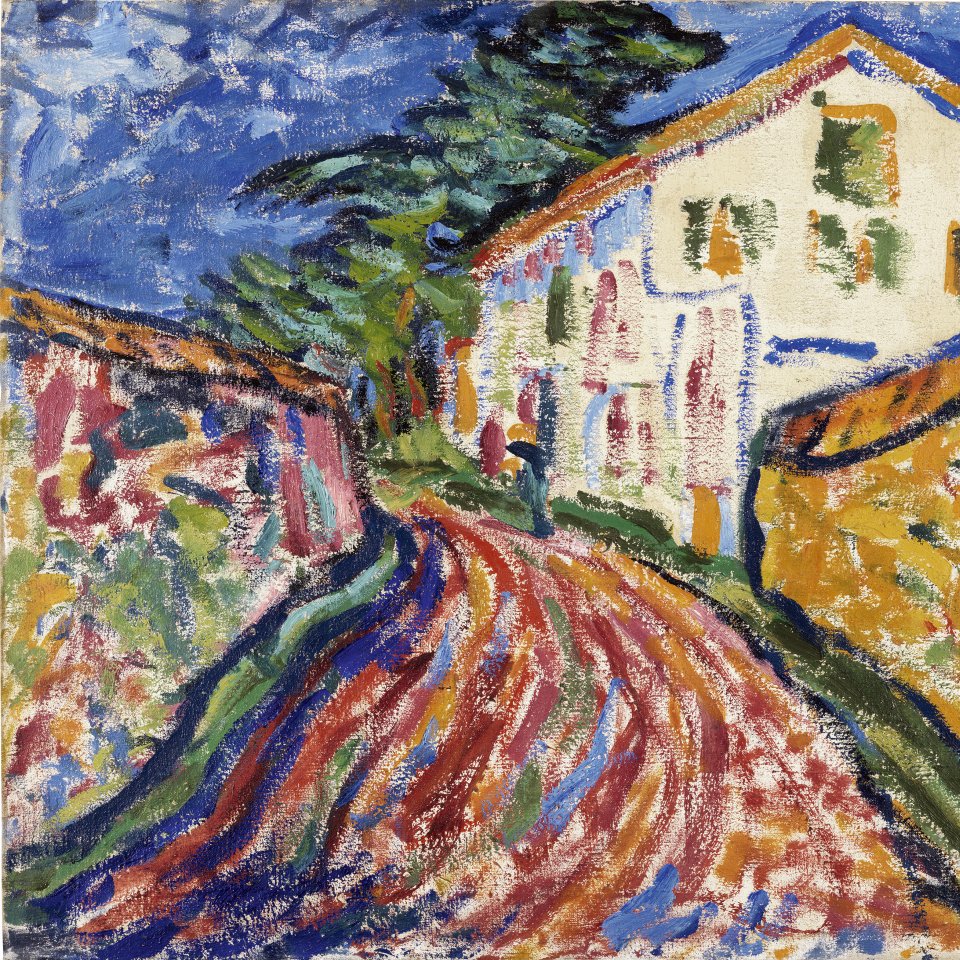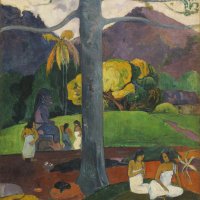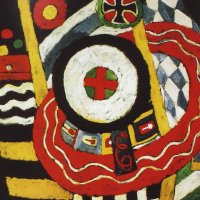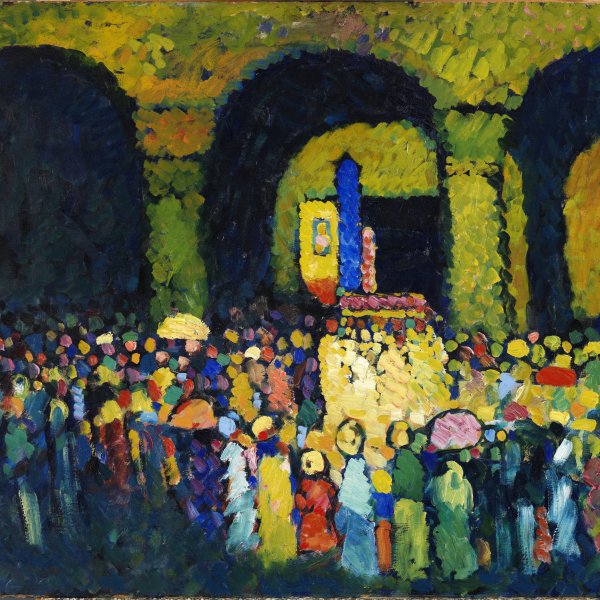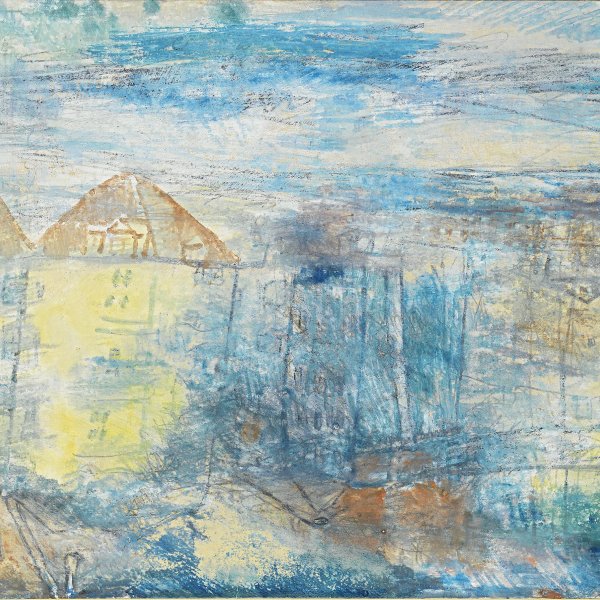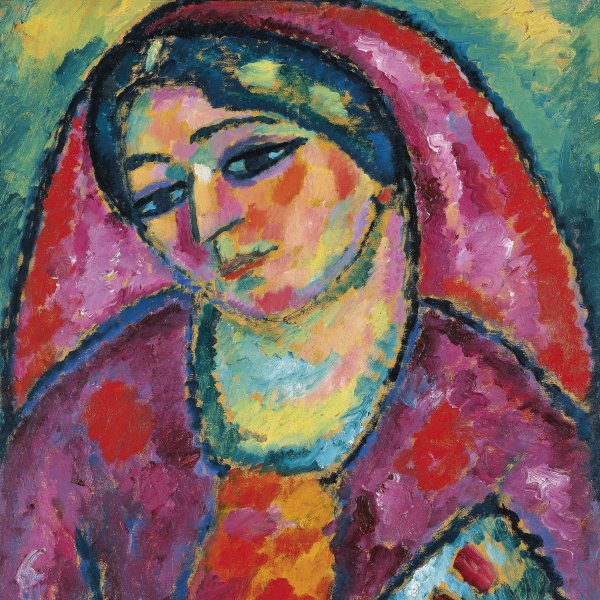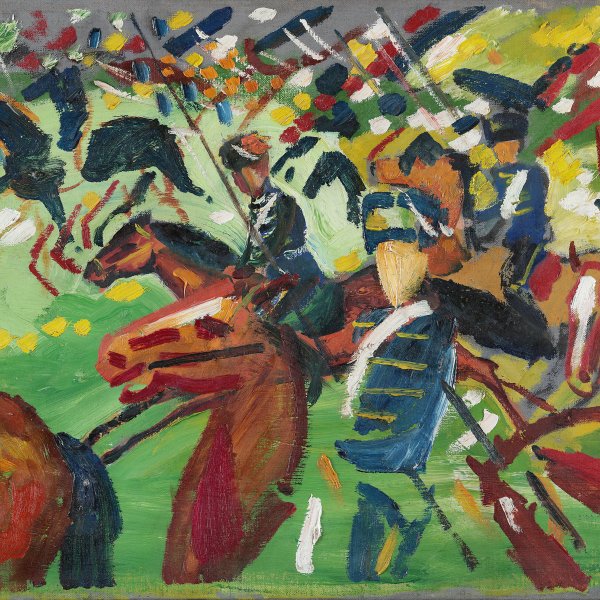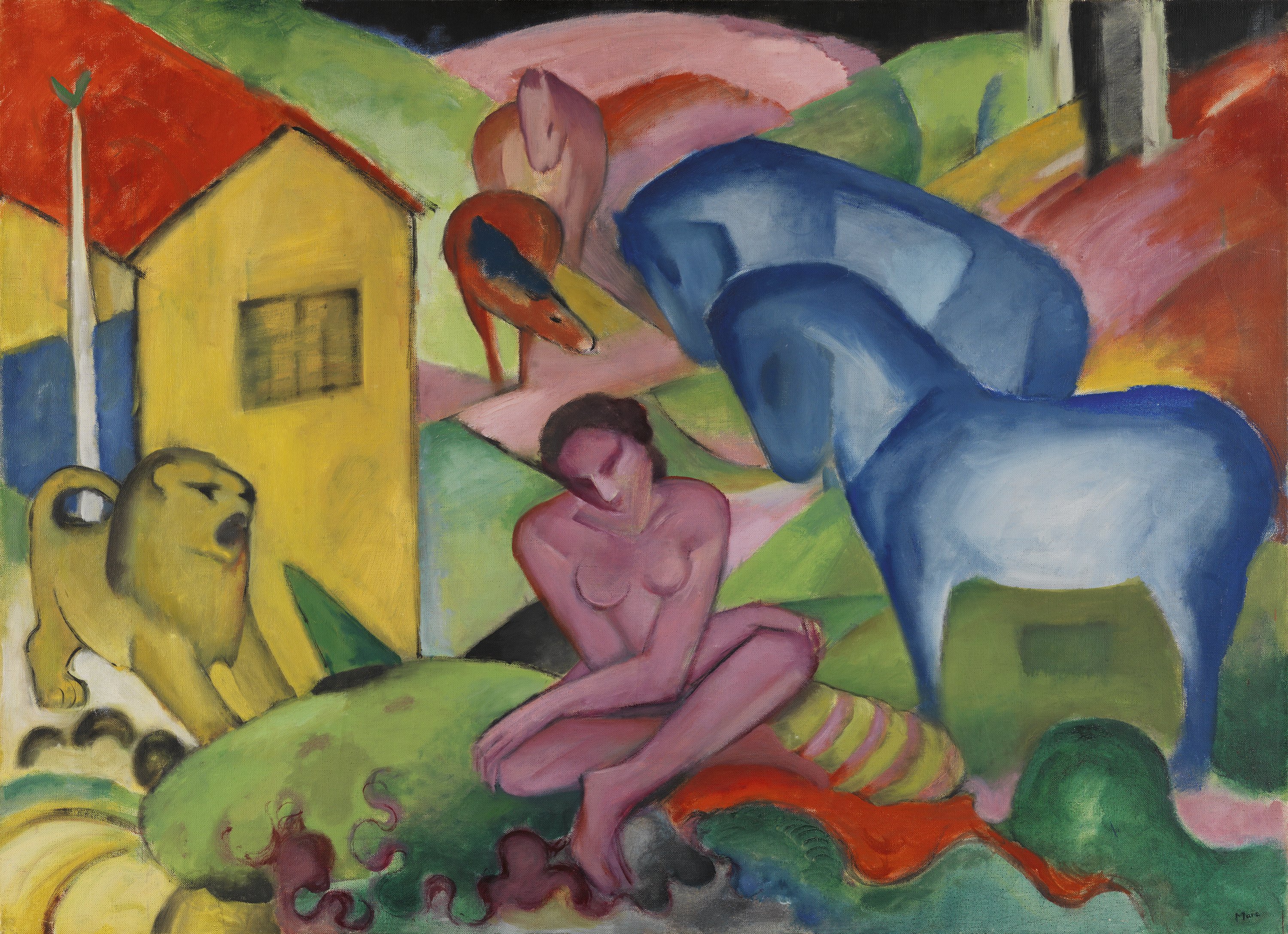The Dream
No longer bound by the truthful representation of nature, yet without wholly relinquishing links to the real world, Franz Marc provides in The Dream a masterly reflection of ‘the organic rhythm... of all things,’ highlighting his awareness of Italian Futurist and French Cubist theories. The composition is structured around dynamic lines radiating outwards from the female figure in the foreground; naked and asleep, she becomes a symbol of the harmony between the human world and the animal realm. The varied creatures that surround her seem to be the product of her dream. Marc uses colours with symbolic meanings: blue, for example, represents what is masculine and intellectual, while yellow symbolises femininity and warmth.
However, the allegory represented by The Dream is not overly explicit. As Klaus Lankheit suggests, it is more of a poetic image without any rational meaning. The scene takes place in the middle of the night, as indicated by the marked blackness of the background sky. The yellow house on the left may symbolise the real world, while the rest of the composition is occupied by the scene of the dream. The naked female figure in the centre, who sleeps seated with her legs crossed and surrounded by animals, is perhaps the symbol of harmony between man and the animal world. In this Garden of Earthly Delights the animals enact the rhythms of nature and the colours are tinged with a symbolic meaning. In Marc’s language, the blue of the horses symbolises the essence of masculinity, intellectual and spiritual; the yellow is the essence of femininity, kindly and sensual; whereas red is the colour that should be combated and defeated by the other two.
The influence of the Italian Futurists can be found in the rhythmic structure of the forms and in the lines of force that infuse the composition with movement. Also noteworthy is the mark left on the artist by the painting of Paul Gauguin, especially that of the Tahitian period, in his desire to show nature in its most primitive state. Peter Vergo relates this work to The Shepherds, which depicts a nude couple among animals, the horse and the female figure being very similar to those in the painting in the Thyssen-Bornemisza collection.
The Dream was a gift from Franz Marc to Wassily Kandinsky shortly after it was completed, in 1912 or early 1913. Kandinsky in return gave Marc his Improvisation 12. Rider. While Kandinsky was in Russia (from 1914 to 1921) the work remained in the care of Gabriele Münter and was shown, on the express wishes of Maria Marc, in the exhibitions held in Munich and Wiesbaden in 1916 to mark the painter’s death. Years later, during Katherine Dreier’s visit to Kandinsky in the Bauhaus, The Dream was selected for the International Exhibition of Modern Art of the Societé Anonyme shown in New York and several American cities during 1926 and 1927. In her introduction to the catalogue, the American author published an illustration of this painting and underlined Marc’s influence on modern painting.
Paloma Alarcó
Emotions through art
This artwork is part of a study we conducted to analyze people's emotional responses when observing 125 pieces from the museum.

